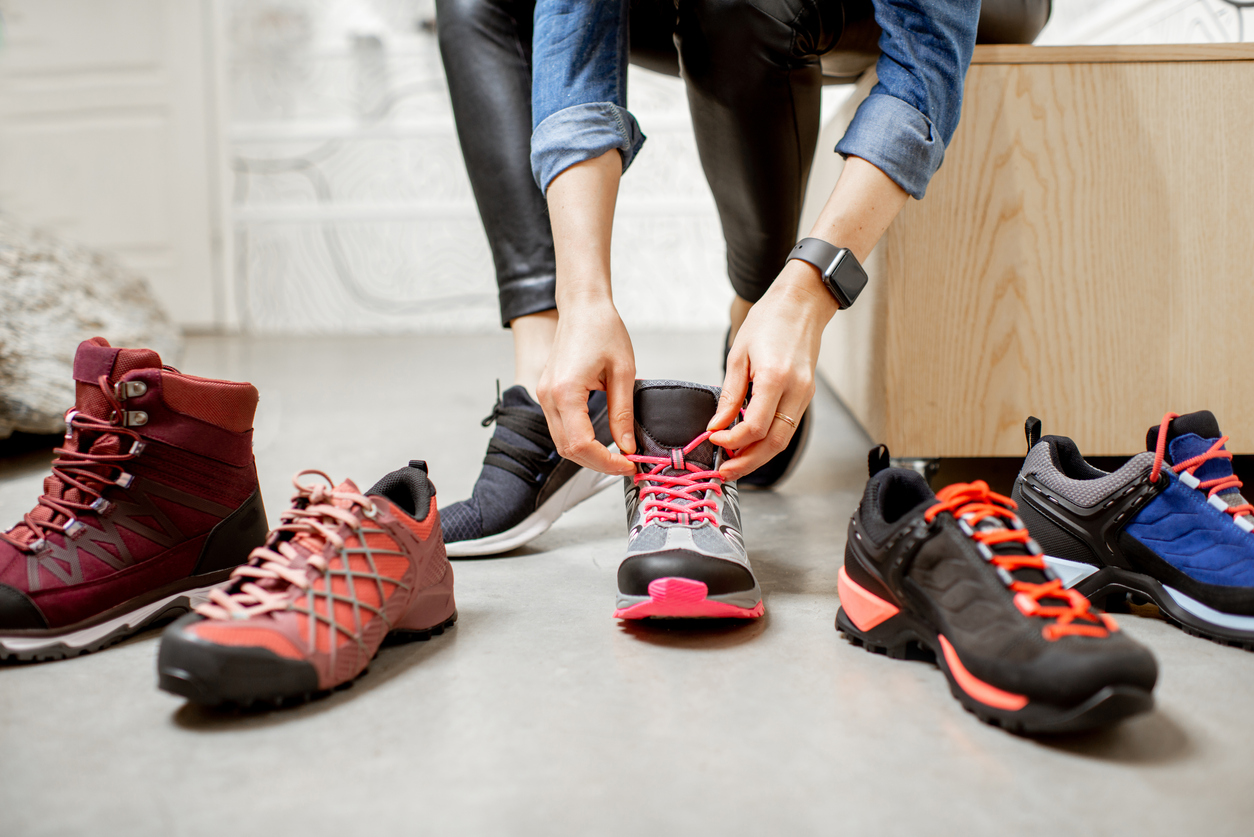For those who are just starting to take up running or who are avid marathon-goers, choosing running shoes is critical. If you are just starting out, choosing the right running shoe may be overwhelming. Running shoes or trainers? Adidas or Nike? The choices are endless. If you are in the market for running shoes, follow our insider tips to make sure you don’t make any mistakes when choosing running shoes. Your feet will thank you!
If you are in need of an orthopedic surgeon in Washington DC, get in touch with Dr. Stein today.
Choosing Running Shoes – A Checklist
1. Shoe Type
You’ll want to head straight to the section specifically for running shoes. The technology is different in running shoes than normal ones as they are specialized for the repetitive motion of running. They also are equipped with the right features to support your foot as you take off for your next stride and come down onto the pavement or treadmill. This will help with shock absorption and ensure your body is in optimal shape to reach your next running goal.
2. Specific Running Shoe Type
When choosing running shoes, focus on the type of running shoe. There are three main types which include:
- Everyday running shoes
- Lightweight running shoes
- Trail running shoes
Depending on your running plans, you’ll want to choose accordingly. The everyday running shoes are the most versatile as they can handle most running activities and are durable.
The lightweight running shoes are best for faster workouts or races as they don’t force you to pull as much weight. Keep in mind these are often less durable than the everyday running shoes.
Lastly, the trail running shoe is best for those who are planning to hit the hills or the mountains. These running shoes have a better grip and are much more durable as you’ll be traversing rough terrain.
3. Fit
If you are going to be logging miles on your shoes, they need to be comfortable. Knowing the important parts of your shoe is helpful to get the right fit. The “upper” part of the shoe is everything above the sole. You’ll want a material that’s breathable to reduce sweat. In addition, you’ll want a shape that conforms comfortably to your foot. Wherever your foot or ankle touches when you try them on should be smooth and comfortable, but slightly snug as the material will inevitably stretch. The “outsole” is the part of the shoe where the rubber meets the road. The sole is often made up of a number of rubber and foam compounds for your comfort. The sole should provide traction and stability without being too heavy or stiff.
4. Looks and Brand
One of the biggest mistakes people make when choosing running shoes is buying purely for the look or the brand. Finding the right color for your new running shoes is fun, but if you want to make running a serious hobby it’s more important to focus on comfort, support, and size. Refrain from counting out the less-than-attractive colors as you may be able to order a different color online. Also, keep the less famous brands on your list as they may surprise you in terms of comfort, durability, and value!
5. Shoe Size
While choosing running shoes can be difficult, be sure to get the right size. An all too common mistake is buying a shoe that is too small. While your shoes and the surrounding material will inevitably stretch, they won’t stretch that much. One key tip is to “play the piano with your toes” when you try on the shoes. If you can do this, they should be about the right size.
Choosing running shoes the right way is important for your foot health. If you find that you cannot find the right fit or keep getting injured while running, contacting a professional foot doctor can help. If you need support with any injuries, preventing future injuries, or heel pain treatment, contact Dr. Benjamin Stein for an appointment. Dr. Stein is a board-certified orthopedic surgeon with a specialty in sports and athletic-related injuries. The investment in seeing a professional for support and injury prevention is invaluable. We are here to help!

